It is a common problem that owners of indoor plants struggle with. This phenomenon can have a dual origin. White plaque may be a result of poor water used to water the plants or may be caused by developing mold. Check out these two reasons for the appearance of plaque on the ground in a flower pot and learn how to get rid of white plaque.
White coating on the ground from water
Basically, there is a white or yellow coating. The reason for this is that the water we water the plants with is too hard. The sediment that is visible on the surface of the earth is calcareous sediment. There are several ways to deal with this. First of all, you should stop watering your plants with water taken directly from the tap. Water for irrigation should stand for at least a day.
In addition to using settled water, we can water the plants with water with the addition of citric acid (half a teaspoon per 1 liter of water), this should neutralize lime compounds. If you don't want to use citric acid, water softener can be purchased at your garden center. In this case, follow the dosage instructions on the package.
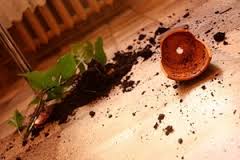
Mold on the ground in a flower pot.
Often white coating on the ground in a flower pot not from too hard water, but as a result of the appearance of mold on the soil in the pot. How then to distinguish one raid from another? So, mold on the ground in a pot looks like a fluffy, soft shell has covered the surface. In fact, it is a mold, often with a large number of spores.
A common cause of fungus appearing on the ground in a flower pot is too intense watering, which significantly increases soil moisture. If the temperature is high and the room is not ventilated and lit, we will create ideal conditions for the development of mold on the ground in the flower pot. This is a much more dangerous phenomenon for our plants than plaque formed from excessively hard water, since mold in a flower pot is harmful to plants.
So how do we deal with mold on the ground in a flower pot ?
First, you must reduce watering. You need to let the top layer of soil dry out a little. The plant should be moved to a brighter place and the room should be ventilated regularly. It is also advisable to treat the soil surface with a fungicide (antifungal agent). Sarfun drugs can help here ( Sarfun 500 SC), Topsin ( Topsin M 500 SC).
If you have something to add, please be sure to leave a comment.
One of the most common problems when growing indoor plants and garden seedlings is waterlogged soil in a flower pot. Because of this trouble, leaves fall from a flower or plant, and mold, rot, an unpleasant odor appear in the soil, or flying midges appear that feed on quickly rotting roots. The first symptom of excess moisture in the soil is a white coating on its surface. How to remove the smell and get rid of it, and what to do with the flower?
 If the soil in a flower pot or garden has been flooded, then emergency measures must be taken to save the flower. How to save a flooded flower in the country? First of all, you need to remove the flower from the pot and leave it to dry for several hours. It is advisable to plant the flower in new soil, but if necessary, you can save the old soil and reuse it. To do this, it must be treated with antibacterial solutions and steamed in microwave oven for 15 minutes. After this, the soil is well dried and used for planting.
If the soil in a flower pot or garden has been flooded, then emergency measures must be taken to save the flower. How to save a flooded flower in the country? First of all, you need to remove the flower from the pot and leave it to dry for several hours. It is advisable to plant the flower in new soil, but if necessary, you can save the old soil and reuse it. To do this, it must be treated with antibacterial solutions and steamed in microwave oven for 15 minutes. After this, the soil is well dried and used for planting.
If the soil in the flower pot has not yet become covered with green mold, then the symptoms of waterlogging can be eliminated quite easily. A little clay, sand or wood ash which will absorb excess moisture. You can also loosen the soil with a wooden stick and make deep punctures in it, which eliminate excess moisture. The easiest way to dry the soil is to cover the soil in the pot with regular paper napkins. It is very important to check the drainage holes of the planting container if problems arise with the soil. After all, they can be clogged, which is why the soil in the flower pot is constantly wet and does not dry out. You can find out how to make flower pots with your own hands.
Plaque on the surface
 If the soil in a flower pot receives excess water, a white or yellow coating appears on the surface of the soil. main reason This means watering with very hard water. Because of this, lime deposits form on the soil surface and it turns white. This problem can be resolved in several ways. The first thing to start with is to avoid watering flowers with water straight from the tap. It should sit for one day. You can also add citric acid to the water. For one liter of water, half a teaspoon of the substance, thanks to this it is possible to neutralize calcareous compounds.
If the soil in a flower pot receives excess water, a white or yellow coating appears on the surface of the soil. main reason This means watering with very hard water. Because of this, lime deposits form on the soil surface and it turns white. This problem can be resolved in several ways. The first thing to start with is to avoid watering flowers with water straight from the tap. It should sit for one day. You can also add citric acid to the water. For one liter of water, half a teaspoon of the substance, thanks to this it is possible to neutralize calcareous compounds.
In addition, to prevent the formation of a white coating on top, the soil is covered with expanded clay, which absorbs excess moisture. You can also sprinkle the soil in the pot with coarse river sand, which is loosened along with the soil. Such activities have a beneficial effect on the health of the flower roots. The next way to eliminate excess moisture is to remove the top layer of soil and add dry leaf soil to the pot. The surest and easiest way to eliminate soil deposits is to install a water filter in your home that will soften hard water. To soften the water, rag bags with peat are dipped into it.
Mold in flower pots
 When the soil in a flower pot is very wet, it becomes a breeding ground for mold, so the plant needs to be provided with proper watering and good drainage holes that will prevent stagnation of water. If the soil is already moldy and soil black bugs have infested, then stop watering immediately, and root system the plants are dried. The outer layer of soil must be removed at a height of at least 2 cm and replaced with fresh substrate.
When the soil in a flower pot is very wet, it becomes a breeding ground for mold, so the plant needs to be provided with proper watering and good drainage holes that will prevent stagnation of water. If the soil is already moldy and soil black bugs have infested, then stop watering immediately, and root system the plants are dried. The outer layer of soil must be removed at a height of at least 2 cm and replaced with fresh substrate.
If these measures do not give a positive result and the soil in the flower pot remains wet, then all the soil will have to be replaced. Before planting, the flower along with the earthen lump is removed from the pot and left to dry for at least one day. The old soil needs to be thrown away and the new soil should be steamed at high temperature. If a ceramic pot is used for planting, it should be doused with boiling water. The ceramic pot needs to be boiled in water for a few minutes.
When the soil becomes moldy in a plastic pot, it is better to throw it away, since there are fungal spores on its walls that will multiply in the new soil. There should be a drainage layer of expanded clay at the bottom of the pot. The top layer of soil is sprinkled with sand, which will help avoid increased humidity.
Midges in the ground
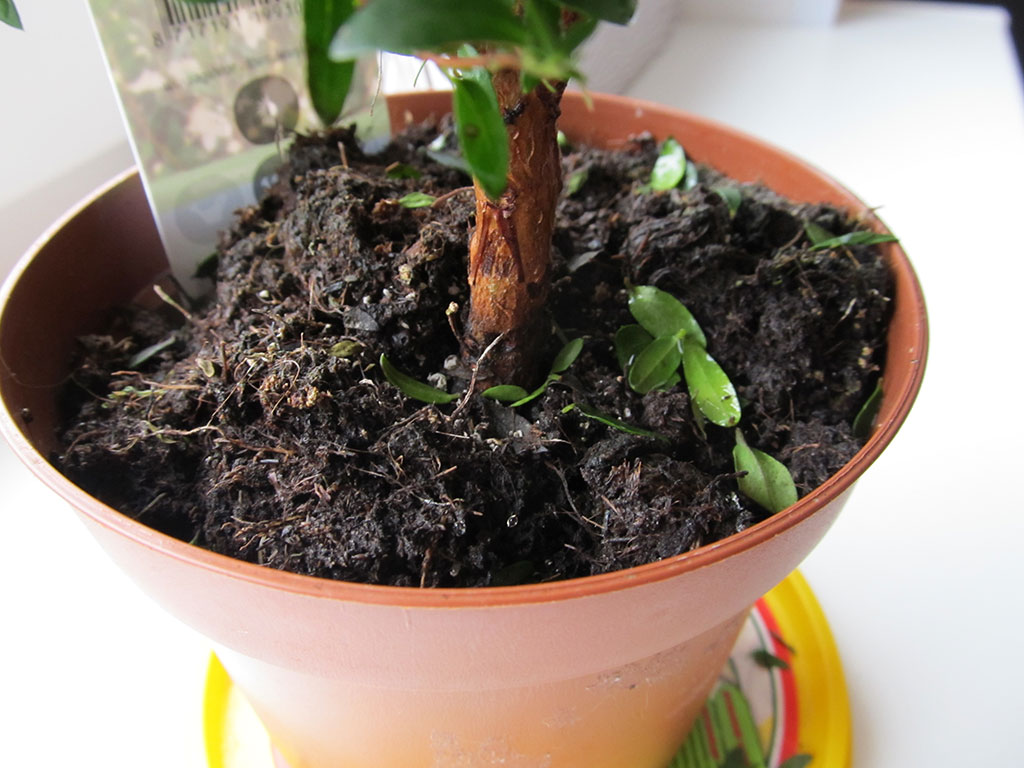 Sometimes the soil in a flower pot becomes covered with small midges that feed on rot. The first step in the fight against midges in orchids is the removal of all withered and poorly rotting parts of the flower, which feed harmful microorganisms and insects. It is very difficult to fight them, so it is easier to get rid of the old soil, wash the roots of the flower and plant it in a new, steamed substrate. It is also necessary to treat the roots before transplanting.
Sometimes the soil in a flower pot becomes covered with small midges that feed on rot. The first step in the fight against midges in orchids is the removal of all withered and poorly rotting parts of the flower, which feed harmful microorganisms and insects. It is very difficult to fight them, so it is easier to get rid of the old soil, wash the roots of the flower and plant it in a new, steamed substrate. It is also necessary to treat the roots before transplanting.
Waterlogged soil in a flower pot readily attracts small pests that lay their eggs on the ground. To prevent such a nuisance, the top layer of soil of the flower should always be dry, and sufficient drainage holes should be provided in the pot. To prevent the reproduction of midges, the room in the house must be regularly ventilated and treated with special anti-insect preparations.
It is advisable to hang flytraps next to house plants, since these insects are carriers of all kinds of plant diseases. You can also use it to combat midges folk remedies. For example, take 20 grams of laundry soap and grate it. Next, dissolve it in a liter of water and spray the flowers with this composition once a week. The soil in the pot is also watered with a weak solution of potassium permanganate, which also gives a good effect.
Unpleasant odor from soil in a flower pot
When the soil in a flower pot gives off an unpleasant odor or stinks, this indicates that there is mold and pathogenic bacteria inside.
To prevent the soil from smelling, it is necessary to remove the top part of the soil. The remaining soil is treated with a disinfectant solution of foundationazole or water with manganese. The missing part of the soil is replaced with fresh soil, which is steamed in advance in the microwave for 15 minutes. Next, it is dried well and placed in a flower pot. It is also important to keep track of drainage holes, which may be clogged.
Why do animals eat and dig?
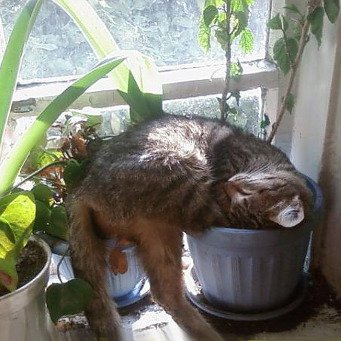 Usually, young Alabai puppies and kittens, who are just exploring a new world and trying to taste everything, dig or eat soil, grass, and coal. How to wean a puppy or child if he climbs and scoops up the soil? The animals are driven by ordinary curiosity, so after several attempts to eat the earth, everything stops. The toy terrier puppy will understand that the soil is not tasty and will not try it again. However, this sign is not curiosity, but a reason psychological state dogs or cats. This happens because the animal does not feel comfortable in the house or has a dislike for the new family member.
Usually, young Alabai puppies and kittens, who are just exploring a new world and trying to taste everything, dig or eat soil, grass, and coal. How to wean a puppy or child if he climbs and scoops up the soil? The animals are driven by ordinary curiosity, so after several attempts to eat the earth, everything stops. The toy terrier puppy will understand that the soil is not tasty and will not try it again. However, this sign is not curiosity, but a reason psychological state dogs or cats. This happens because the animal does not feel comfortable in the house or has a dislike for the new family member.
Perhaps the owner treats the cat or dog poorly, punishes him, and he takes revenge in this way. Sometimes animals chew and tear furniture, walls or shoes of their owner. Therefore, in order to understand why an animal licks clay and sand, digs or eats soil from a flower pot, it is necessary to examine its health, for example, for feline anemia. If the reasons lie in the animal’s personal hostility or psychological discomfort, then the owner and his household should give the pet more affection. It is very important to communicate more with your pet, spend time with him, praise him, and play with the animal.
Signs about a flower pot in a dream
When you dream of flowers in pots, this is one of the most favorable plots that predicts good luck and success in the future. Perhaps a great material reward awaits the person ahead, or he will buy expensive property. However, this interpretation is correct in the case when the flower did not fall and was dreamed of as blooming, green and fresh. If in a dream a person sees limp, dried flowers, then this may indicate troubles in the future. For example, there will be troubles at work, financial losses or quarrels in the family. When a flower falls off in a dream, it speaks of illness.
If in a dream a person dropped and broke an empty pot on the floor in the room, poured soil out of the pot, or broke it, then this may foretell discord in the family in the future, even divorce. Also, scattered earth at night speaks of illness, loss of loved ones or financial difficulties. It is worth considering that the prediction of dreams may depend on who dreamed of the flower pot. For example, if beautiful flower dreamed of a young girl, then a wedding awaits her. For older women blooming flower talking about possible pregnancy, and for older ladies such a dream promises the presence of diseases of the reproductive system.
Decorating soil in a pot
When decorating the soil in a flower pot, in most cases fine gravel is used, which is painted with multi-colored dyes.
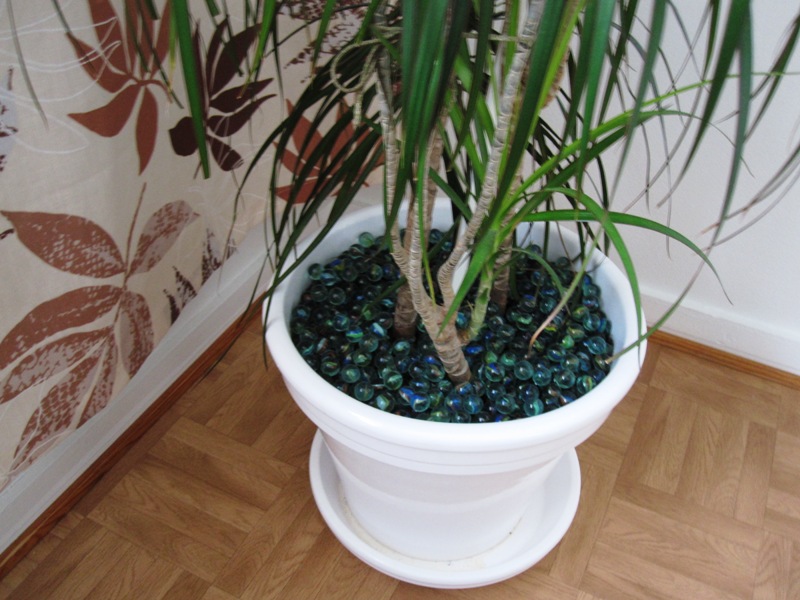 The colored stones are washed with water and poured into a flower pot in a layer of up to 2 cm. If desired, patterns, drawings or ornaments are made from colored stones. The main thing is to show your imagination and use stones of different sizes for mulching, ranging from 2-3 mm to large specimens up to 1 cm.
The colored stones are washed with water and poured into a flower pot in a layer of up to 2 cm. If desired, patterns, drawings or ornaments are made from colored stones. The main thing is to show your imagination and use stones of different sizes for mulching, ranging from 2-3 mm to large specimens up to 1 cm.
Also, to decorate the top layer of soil, fine orange gravel or coarse, colored sand, which can be bought at a flower shop, is used.
Usually the soil is decorated for cacti of different sizes in landscape design. Group plantings of different varieties of succulents, which are decorated with multi-colored stones, look very impressive. You can also use sea, small pebbles, and pebbles for decoration. For plants that need high humidity, sphagnum moss is used, which makes the soil surface a rich green color. If the moss has lost its beneficial features, then its top layer turns brown. In this case, it is replaced with new moss. A lot of useful information in the article: .
- Pests, insects and diseases
- Soil waterlogging
- Causes of white plaque and measures to get rid of it
- Increased soil acidity
- How to Replace Topsoil
- Correct crop rotation in the greenhouse
Many summer residents wonder why the soil in the greenhouse turns white, because they take such careful care of it, fertilize it, water it and weed it. So what is the cause of green soil, mold and white residue?
The most common causes are excessive soil moisture, pests and improper care.
The soil is sick for several reasons:
- If you water the soil endlessly.
- With increased soil acidity.
- When the greenhouse is poorly ventilated or absent at all, resulting in increased humidity in the room.
- If you add a lot of fertilizers to the soil.
These reasons can be combined with each other.
Pests, insects and diseases
Very often, pests lay their larvae in the soil, where they remain for a long time. If this problem is not dealt with, the number of harmful larvae in the soil will only increase. And some conditions can contribute to this, for example, heating the soil in the cold season, etc.

The most common pests include:
- wireworms,
- cabbage flies,
- bear,
- spider mite and others.
Other types of soil diseases include infections vegetable crops- These are various mold spores and fungal diseases that can also penetrate the soil and cause infection. Many microorganisms are able to penetrate not only into the soil, but also constantly remain on the frame of the greenhouse itself (especially if it is made of wood). Therefore, if you carry out measures to disinfect the soil, it is necessary to touch all parts of the greenhouse in order to completely prevent the re-production of harmful microorganisms.
Common soil diseases:
- clubroot;
- late blight;
- spots on leaves;
- macrosporiosis;
- peronosporosis.
Return to contents
Soil waterlogging
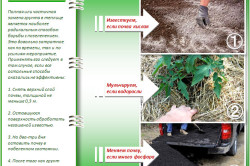
If the soil is waterlogged, then in the near future you may find algae, fungus and mosses in your beds. This is also facilitated by warm air in the greenhouse. Particular insidiousness may come from groundwater, which may be located in the area of the greenhouse. Often, the owner of a greenhouse may not be aware of this and water his plants as usual; as a result, excessive moisture occurs, which in turn leads to soreness and greening of the soil.
How to distinguish moss from algae? These two species can often be confused, but they have distinctive features:
- When the greenhouse lighting is poor, moss appears on the plants and soil.
- But if there is enough light in the greenhouse, then we can talk about the formation of algae.
Return to contents
Causes of white plaque and measures to get rid of it
White coating is a yellowish crust consisting of salt. It can form for the following reasons:
- If the soil composition is considered mechanically heavy.
- Difficult soil drainage.
- With poor or scanty watering.
- Too much fertilizer in the soil.
- A large amount of fertilizing in the soil.
- The composition of irrigation water may contain large amounts of chlorine, calcium or magnesium.
- Dry air.
- Fungus or mold.
Ways to combat plaque.
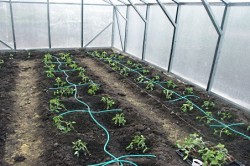
The appearance of green and white deposits in the soil is associated with excessive waterlogging of the soil.
You can get rid of white deposits on the soil in different ways:
- For example, you can sprinkle the surface of the soil with expanded clay. It is on it that a white dried sediment will appear; from time to time the expanded clay needs to be washed and returned to its place again.
- Sprinkle the top layer of soil with river sand and loosen it more often. This is very beneficial for the root system of plants.
- You can remove the top layer of soil and add leaf humus.
- Remove the top layer of soil and fill in a new one.
- Purchase a soil deoxidizer from a specialty store. Remove the top layer of soil and pour the deoxidizer deeper.
- Water the soil with softened water. To do this, use a special filter. You can put a bag of peat in a bucket of water. If possible, water should be passed through a layer of peat, then the salts will be adsorbed.
Return to contents
Increased soil acidity
To reduce the acidity of the soil, which causes moss and mold to spread throughout the area (and this is detrimental to plants), you need to take the following actions:
- Add tree resin to the soil; this should be done from time to time. But not too often.
- Add lime to the soil.
- Dolomite flour added to the soil effectively eliminates soil diseases.
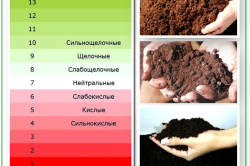
It is advisable to add these fertilizers to the soil at the time of digging up the earth, before planting and after harvesting. In this case, the soil in the greenhouse will not deoxidize, causing mosses to stop appearing.
To ensure that plants grow well in the soil and produce a harvest, do the following:
- Sprinkle lime on the soil and do not dig up the soil.
- After this, sow green manure - this is a fast-growing grass.
- After the grass sprouts, plant seedlings of other vegetable crops in the soil.
- After the seedlings have taken root, the grass is mowed and subsequently used as mulching material.
Return to contents
How to Replace Topsoil
If the soil is already diseased, then the top layer of soil needs to be replaced. What do I need to do? And how to replace it correctly without harming the plants?
The process of removing the top layer of soil occurs as follows:
- The soil layer is removed to a depth of 30 cm.
- After this, the soil is covered with lime.
- The lime is slaked with water only the next day.
- Thus, the soil is left for 3 days.
- The lime is then covered with whitewash.
- Only then can you cover it all with a new layer of soil.
You can mulch the soil with the following materials:
- sawdust;
- leaves;
- compost;
- grass;
- straw, etc.
Soil preparation is carried out before mulching. Mulch previously prepared and loosened soil.
We received a letter on our website from Irina Khromova from Nizhny Novgorod. She writes: “My hobby is growing indoor flowers. But here comes the attack. Usually in late autumn a white coating appears on the ground in a flower pot and often my favorite flowers die because of it. Please tell us how to save indoor plants if there is a white coating on the ground in the pot?”
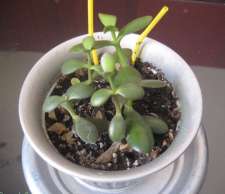 Dear Irina. Most often, the white coating is salt protruding to the surface of the soil. There are many reasons for this phenomenon. For example, the soil is too heavy in mechanical composition or, conversely, too thin, sandy, poor in organic matter that absorbs salts. The consequence of this is high soil capillarity. Moisture, as if through a filter, is drawn to the surface of the soil, evaporates from it and leaves streaks of salt. The same thing happens if you add a large amount of sphagnum to a flower pot. Well, if a white coating appears on the ground in a flower pot, then the plant develops poorly and may even die.
Dear Irina. Most often, the white coating is salt protruding to the surface of the soil. There are many reasons for this phenomenon. For example, the soil is too heavy in mechanical composition or, conversely, too thin, sandy, poor in organic matter that absorbs salts. The consequence of this is high soil capillarity. Moisture, as if through a filter, is drawn to the surface of the soil, evaporates from it and leaves streaks of salt. The same thing happens if you add a large amount of sphagnum to a flower pot. Well, if a white coating appears on the ground in a flower pot, then the plant develops poorly and may even die.
Another reason for the appearance of a white coating on the ground in a flower pot is when the soil mixture is over-fertilized. This usually affects purchased mixtures, especially those intended for vegetables or for plants grown in open ground.
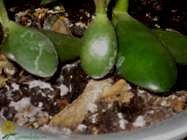 Planting a plant in a flower pot that is too large can also lead to the formation of a white coating on the ground. The plant here is not able to absorb moisture and it, evaporating, draws salts to the surface of the earth.
Planting a plant in a flower pot that is too large can also lead to the formation of a white coating on the ground. The plant here is not able to absorb moisture and it, evaporating, draws salts to the surface of the earth.
Excessive feeding also leads to the formation of white plaque. You should not add nutrient solutions with a concentration greater than 1 g/l, and for ferns and orchids - 0.5 g/l.
White plaque on the soil of indoor plants can also be caused by too hard water. It is softened by boiling, but better later still stand and drain from the sediment. The addition of oxalic acid will virtually eliminate total or carbonate hardness. Usually it is required to add no more than 22.5 mg of oxalic acid per 1 liter of water.
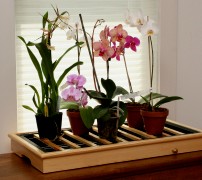 It should also be taken into account that if the air in the room is too dry, evaporation from the surface of the earth in a flower pot increases, which can lead to the appearance of a white coating. For example, in closed greenhouses and greenhouses there is never a salt crust on the ground.
It should also be taken into account that if the air in the room is too dry, evaporation from the surface of the earth in a flower pot increases, which can lead to the appearance of a white coating. For example, in closed greenhouses and greenhouses there is never a salt crust on the ground.
And in a flower pot, a white coating on the ground may be ordinary mold. It can be identified by the fact that it is soft, does not smear and does not crunch when rubbed with your fingers. It is not dangerous for adult plants, but it indicates excessive watering.
How to save indoor plants if there is a white coating on the ground in a pot?
In addition to the above measures, you can improve ventilation in the room and regulate watering of plants. It is also necessary to remove the top layer of soil with a white coating and add a new soil mixture. To get rid of mold, you can sprinkle the soil in a flower pot with cinnamon powder. It has good antiseptic properties.
